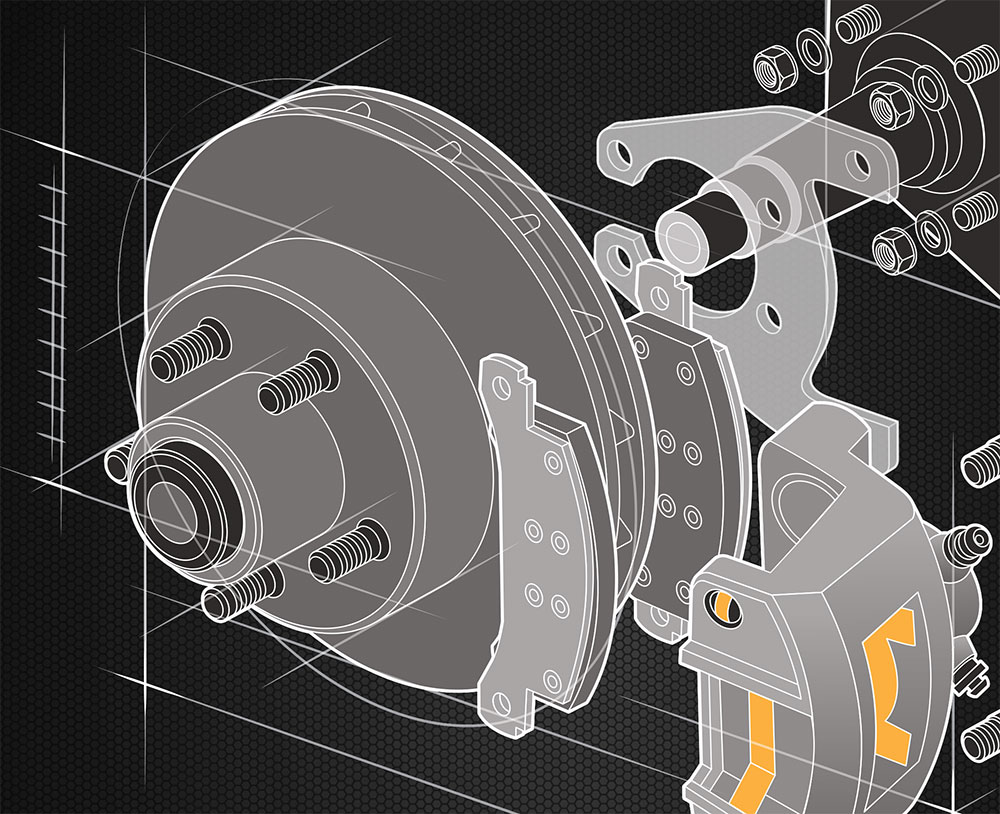
Installing Trailer Brakes
Today, it’s easier to replace than rebuild boat-trailer brakes. Also, many trailer brakes feature integral hubs, giving you new seals, races, bearings and fresh grease in the bargain. If the trailer has drum brakes, now is the time to upgrade to disc brakes. Self-adjusting and more rust resistant, discs are perfect for boat trailers. Consult your trailer manufacturer about appropriate disc-brake size, bearings and seals for your rig.
For this project, we chose a pair of Tie Down (tiedown.com) Eliminator 9.6-inch vented discs with integral hubs (pre-assembled with bearings, rear seal and grease) and aluminum calipers pre-assembled with brake pads. Since you’re dealing with a lot of grease, this can be a messy project, so have plenty of cleanup rags.
Getting Started
Skill Level: 2.5/5
Time to Complete: 2 hours per brake
Tools and Supplies
*Tie Down Eliminator, No. 82113, 9.6-inch vented disc brake assembly with integral hub and GalvX finish
*Socket-wrench set
*Box/open-end wrench set
*Bottle of DOT-3 brake fluid
*Loctite 262 high-strength threadlocker
*Waterproof wheel-bearing grease
*Brake cleaner (to clean grease from disc)
*Floor jack/jack stands
*Lug wrench
*Slotted screwdriver
*Rubber mallet (to loosen/install the bearing cap)
*Cleanup rags (to wipe up grease and brake fluid)
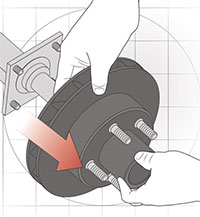
1. Remove the Old Brake
Jack up the trailer to elevate and remove the wheel; use jack stands for extra support. Disconnect the hydraulic line and bearing cap. Remove the cotter pin, nut-keeper (you may have a “self-keeping” castle nut), spindle nut and washer. With a disc, unbolt and remove the caliper and then pull off the disc. With a drum assembly, unbolt the backing plate after you pull off the drum. Clean up the spindle and inspect it for any damage.
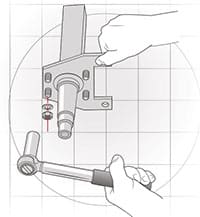
2. Bolt on a New Caliper Bracket
If upgrading from drums to discs, you’ll need a caliper bracket, which bolts to the brake flange on the axle. These brackets are supplied with disc-brake kits (such as kit No. 82405 from Tie Down). If replacing disc brakes but changing brands, you may need to replace the caliper bracket with one from the new manufacturer. Install the bracket so that the caliper is in the quadrant ranging from 12 to 3 o’clock.
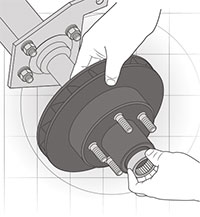
3. Mount the Disc/Hub Assembly
With the rear seal and rear bearing pre-installed and greased, slide the disc over the spindle. Insert the pre-greased outer bearing and washer, and hand-tighten the spindle nut. Place the keeper over the nut and insert a new cotter pin; then bend the two legs of the pin around the spindle. Ensure the disc spins freely but with no side-to-side slop or wobble. Pack the outer hub with grease and reinstall the bearing cap.
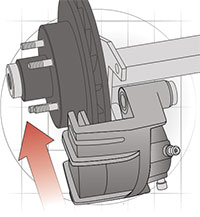
4. Install the Caliper
Depress the inner brake pad as you position the caliper with the pads on each side of the disc, making sure the bleeder valve is positioned at the top of the caliper. Apply Loctite to the threads of the caliper bracket, and then insert the two slider pins through the caliper mounting holes and thread them into the bracket. Then tighten to 40 pound-feet. Connect the hydraulic brake line to the fitting on the caliper.
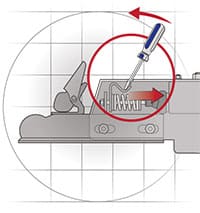
5. Bleed the Brake Lines
With brakes installed, fill the reservoir on the trailer coupler with DOT-3 brake fluid. Ask a buddy to pump the actuator with a flat-head screwdriver and hold it in the depressed position as you open the bleeder valve on the caliper to purge air from the lines. Make sure the reservoir stays full, and repeat the process with each brake until only fluid comes out of the bleeder. Check the lines and fittings to make sure there are no leaks.
Quick Tip: Fit the bleeder valve with a length of clear tubing and feed it into a container. This will let you see if air is coming out of the bleeder and also contain the fluid. Do not reuse the fluid; dispose of it at an oil recycling facility.









